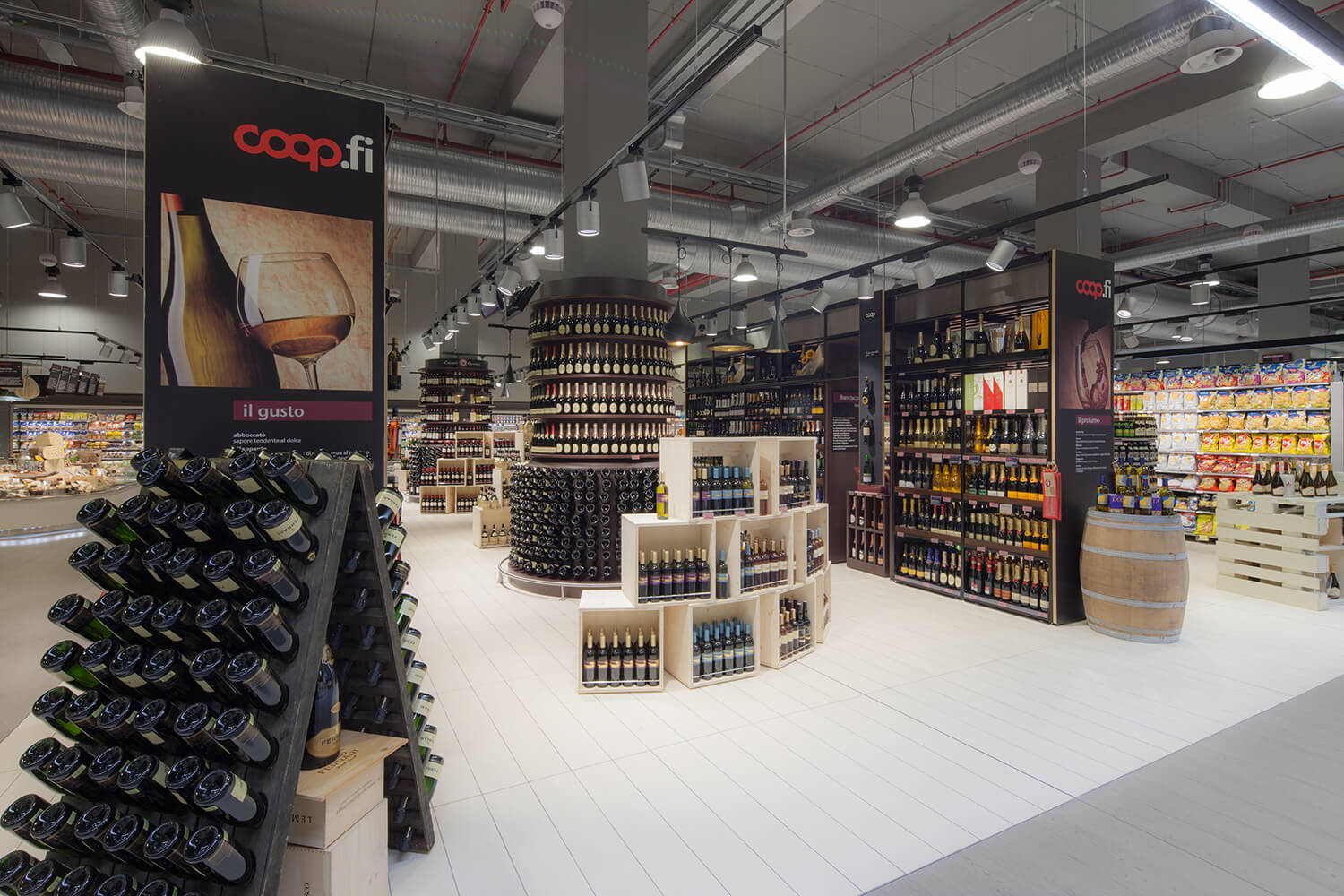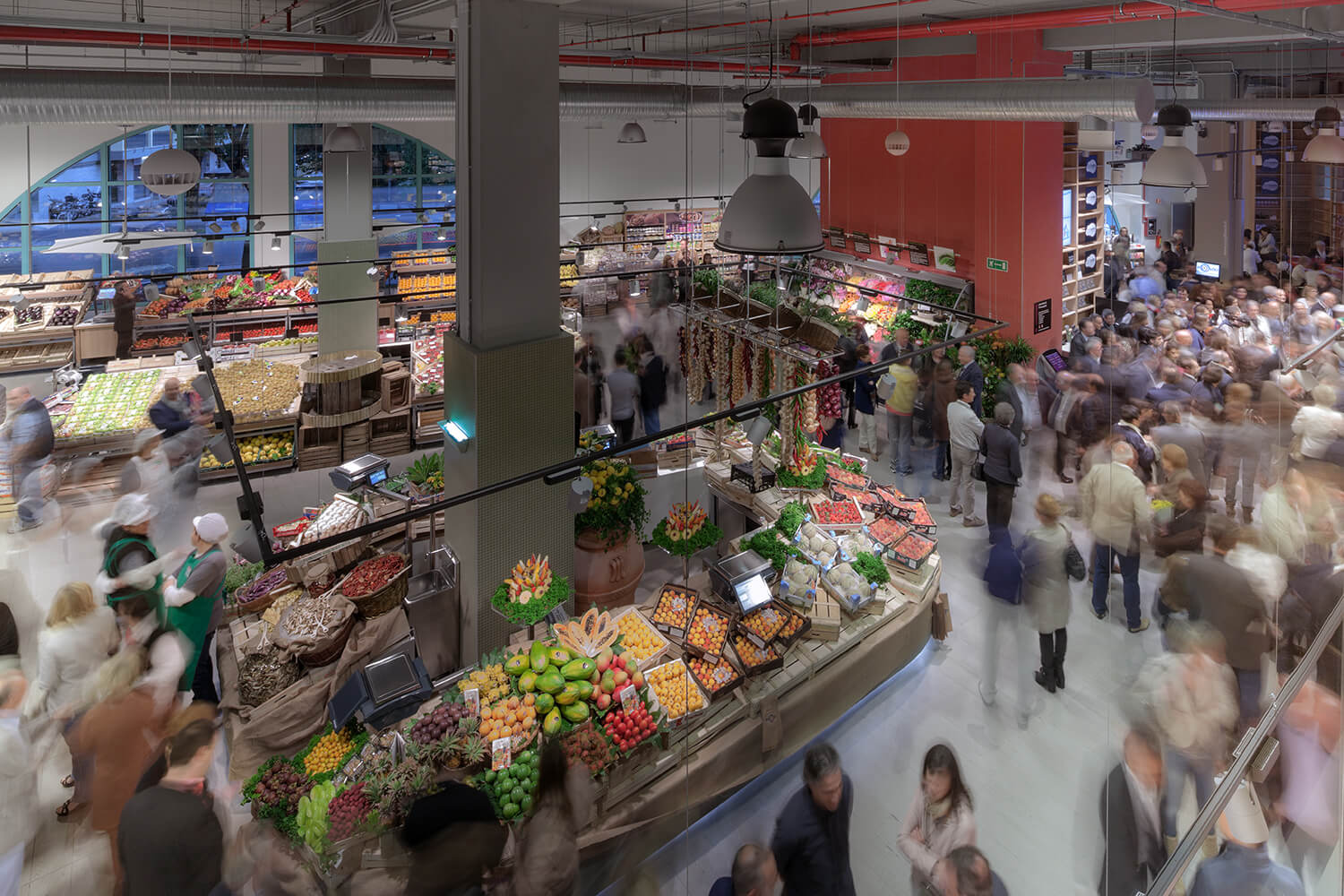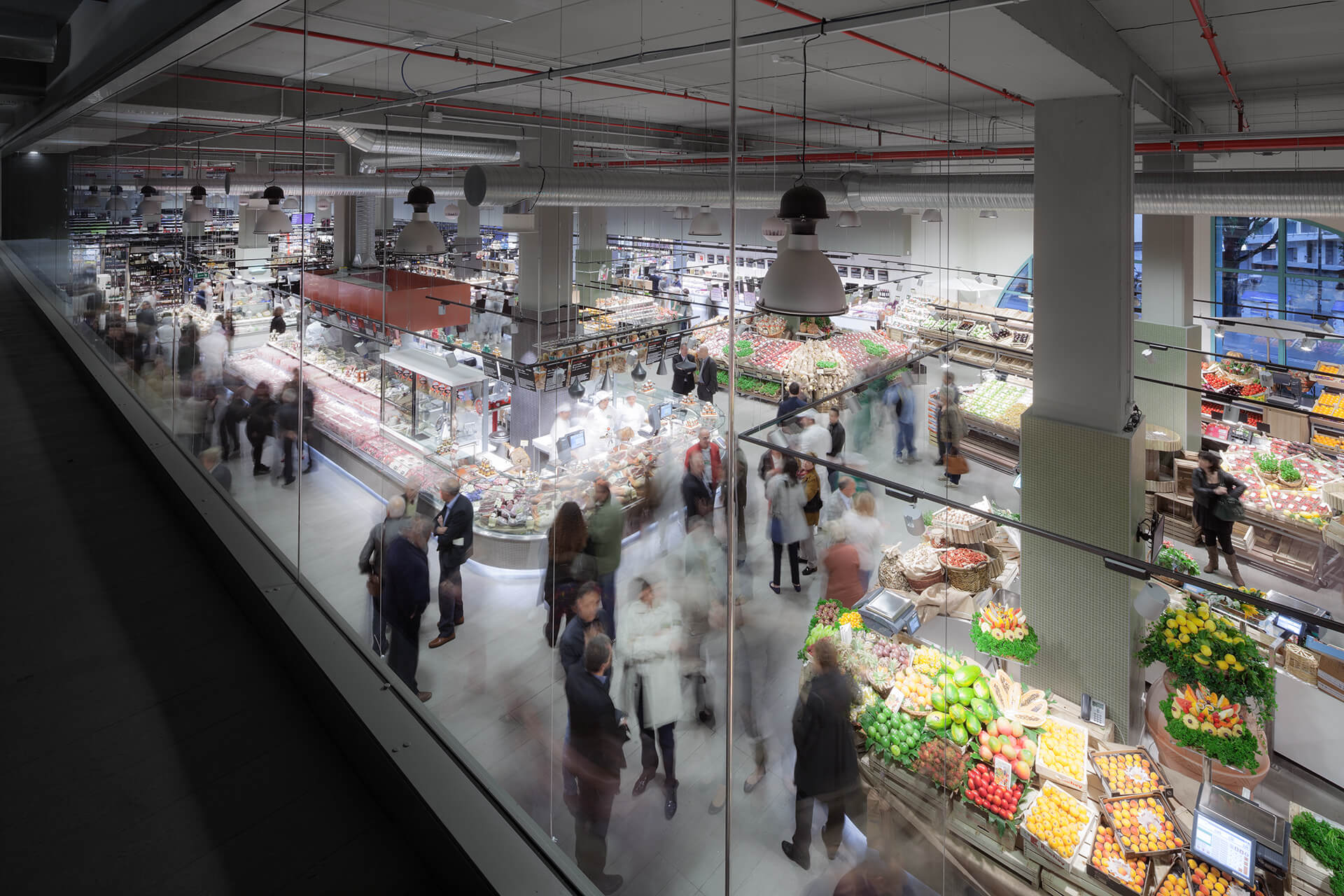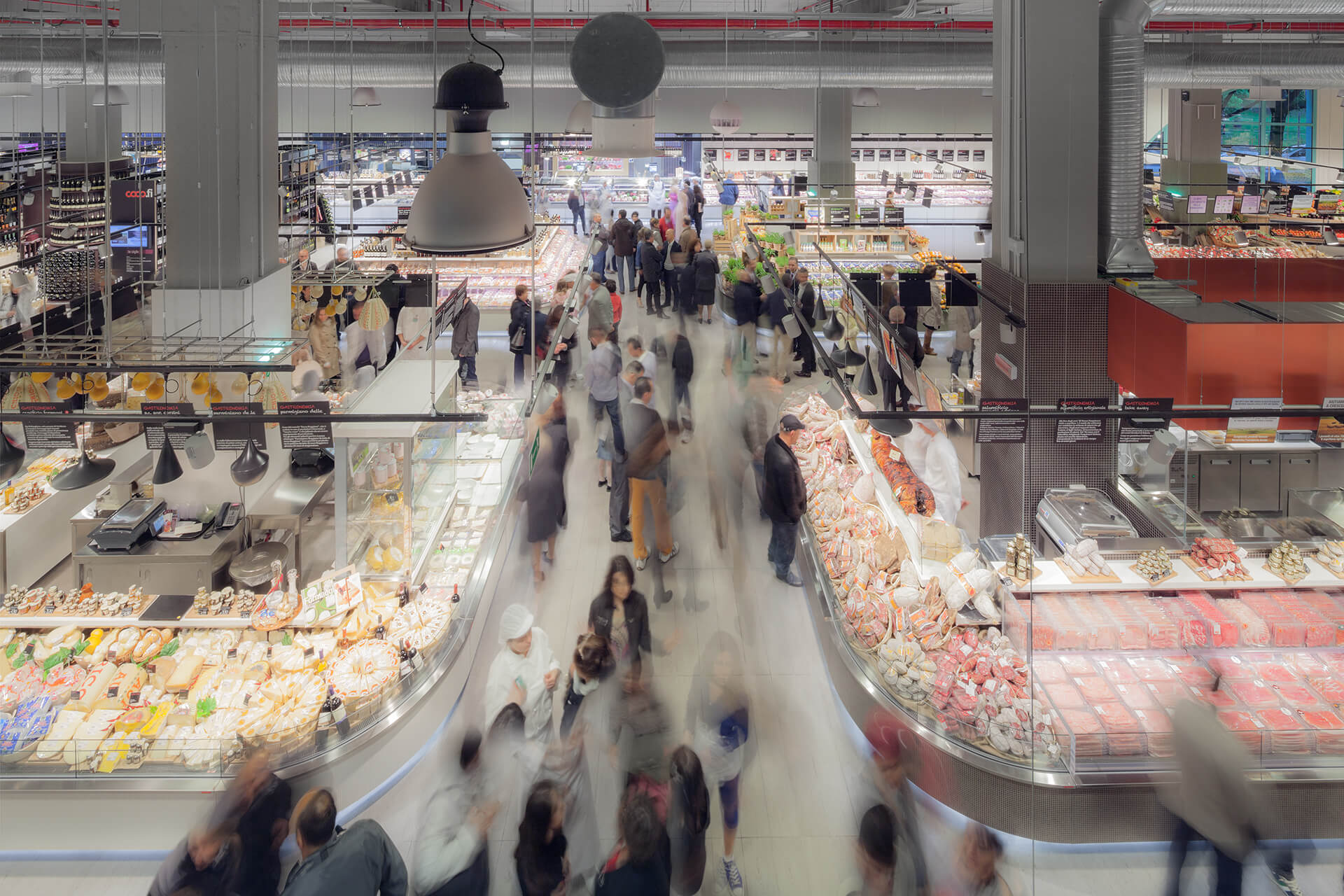
Sustainable trade, urban regeneration, contemporary market
Field
Food
Client
Unicoop Firenze
Location
Via Forlanini 1, Florence,
Italy
Opening
March 2012
Type
Space configuration
and design
Architect
Paolo Lucchetta
Architects/Designers
Giovanni Frisan
Riccardo Fracasso
Category
Architecture
Interior Design concept
Photos by
Marco Zanta
Sustainable commerce, urban renewal, and a modern market: these are the keywords to a project that has benefited from much attention, enthusiasm, and research in order to place the commercial and social values of UnicoopFirenze at the service of a composite and various metropolitan segment of consumers.
A place built around the human factor, whether it would be made up by the members of the cooperative or the families who live in one of the Florentine neighborhoods that symbolize the recent transformation in town planning and architecture, students of the new university campus, office workers of the new courthouse, or just occasional clients of the fitness center or multiplex cinema.
Two enormous windows make visible both to whom pass by with public or private transport in the traffic of the streets of Novoli and to whom walk those strolling past the fruit and vegetable stalls and bookstands the attraction of the urban scene and the citizens to which the area is dedicated.
The values of accessibility and welcome for the varied clientele are evident in all the ergonomic and technological choices made, from the information desk to the digital technology used for bookings with priority granted to the lesser endowed categories. Like the choices made in illumination material and technologies, all the other choices made have been oriented to energy savings, efficiency, and the economic sustainability over time.
One of the most immediately evident innovations is, however, the incorporation of areas for social intercourse inside the market, where it’s now be possible to watch and take part in events, performances, and food and beverage samplings in a multimedia arena surrounded by books and areas dedicated to members of every age (pre-schoolers, students, and grandparents) amidst wireless internet workstations and tables for drawing or reading.
Fine architecture outlines an area usually deemed inappropriate for the hosting of traditional markets, which in this case instead provided the occasion for innovations in the layout, shape, and sequence of the islands with which this truly contemporary market has been organized.
New layouts composed by islands are dedicated to the freshness of Coop brand products, household articles, and assortments of high-quality products and Tuscan specialties.
The lightweight and transparent display structures are distinguished by a design that is familiar and traditional at the same time, even when illuminated by LED technology and continuously suspended between innovation and tradition, such as the “humble” ceramic –not glass– mosaic materials or the innovative flooring with all its warmth and original runs made by Italian producers who are international leaders in ceramics.
A sober, never ostentatious or excessive style, is always informed and sustainable: these are the intentions behind the design of the space and its furnishings that express modernity and innovation in one of the most vital ways in which we live in our cities: the marketplace as a commercial and social setting dedicated to the people.
Far from a jumble of goods, products are presented one at a time and explained by graphic and digital instruments illustrating their traceability, origin, and the reasons behind their convenience.
An enormous carpet laid in the space expresses this intention for a Copernican revolution in values in which local products and those dedicated to wellbeing all assume greater importance and relevance when brought to consumers’ attention as part of the daily shopping.
Extensive digital support, a new brand, and new display solutions are placed at the service of the clients, while avoiding exhibitions of technology as useless solutions and instead providing proposals that support customers in obtaining the necessary information for making high-quality choices for foods and other products.
In a nutshell, the project aims to reconnect and update the tradition of the market around the quality of the relationships between the places, people, and things if which the markets – like it or not – continue to be unsurpassed examples . Places inspired by and made for people.
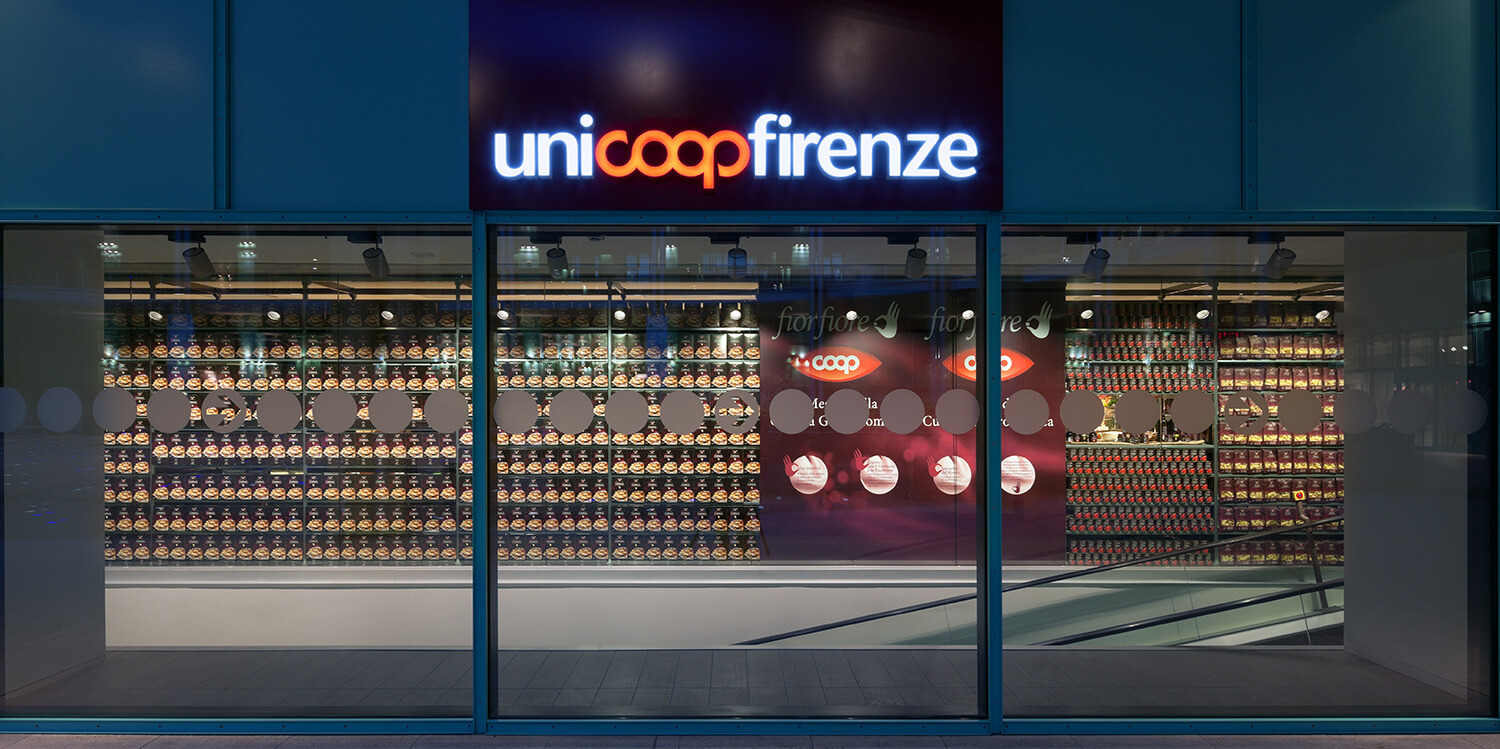

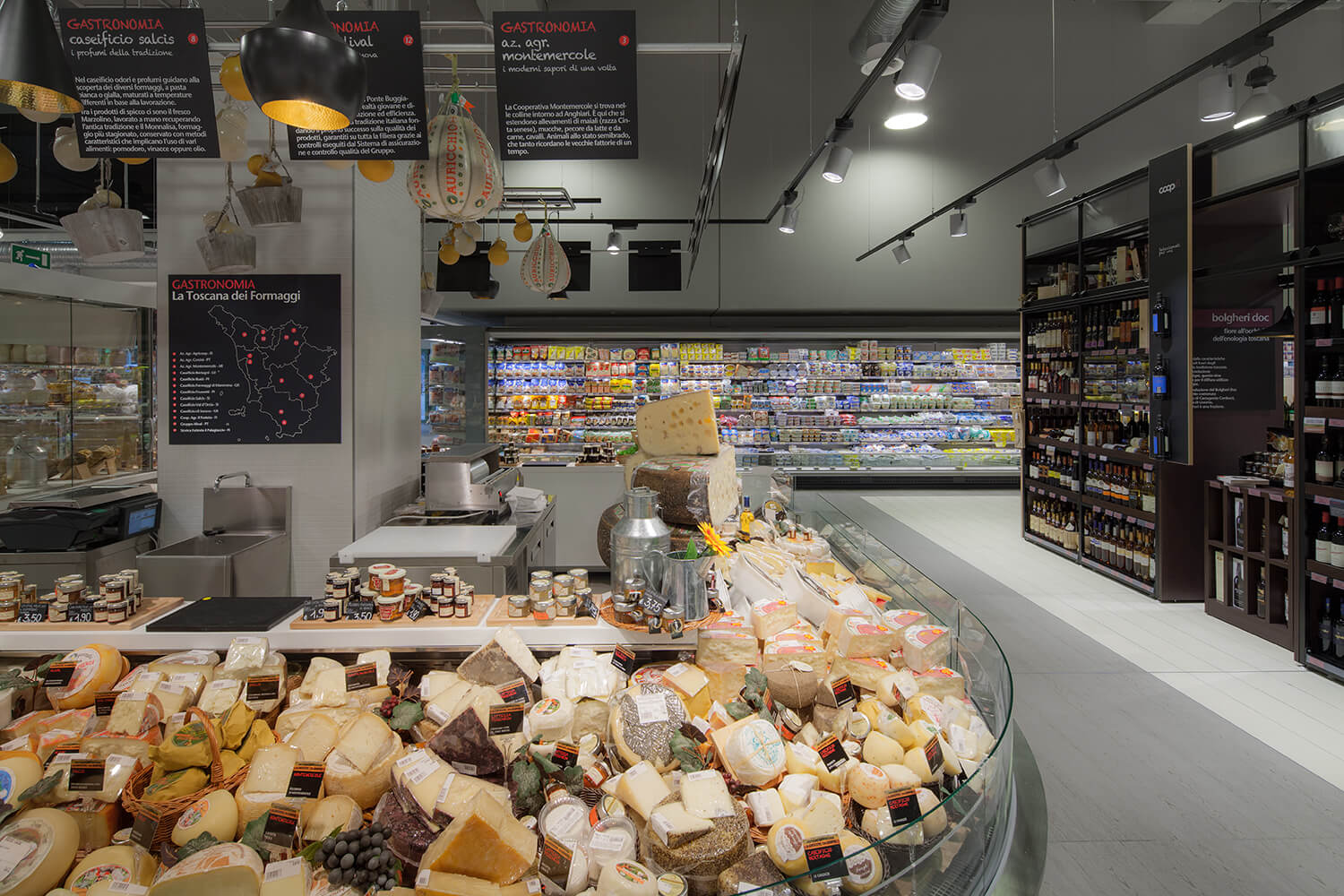
One of the most immediately evident innovations is, however, the incorporation of areas for social intercourse inside the market, where it’s now be possible to watch and take part in events, performances, and food and beverage samplings in a multimedia arena surrounded by books and areas dedicated to members of every age (pre-schoolers, students, and grandparents) amidst wireless internet workstations and tables for drawing or reading.
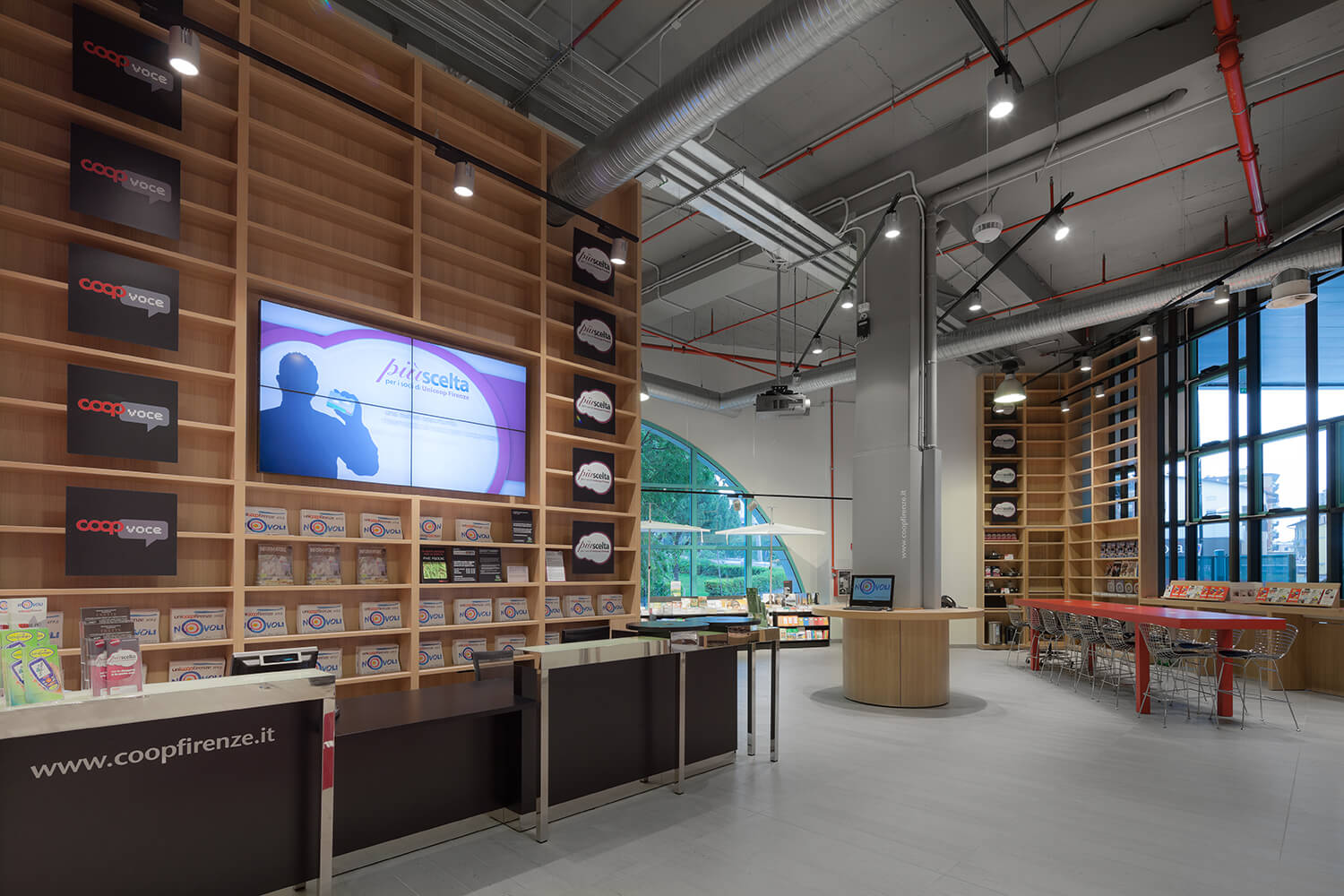
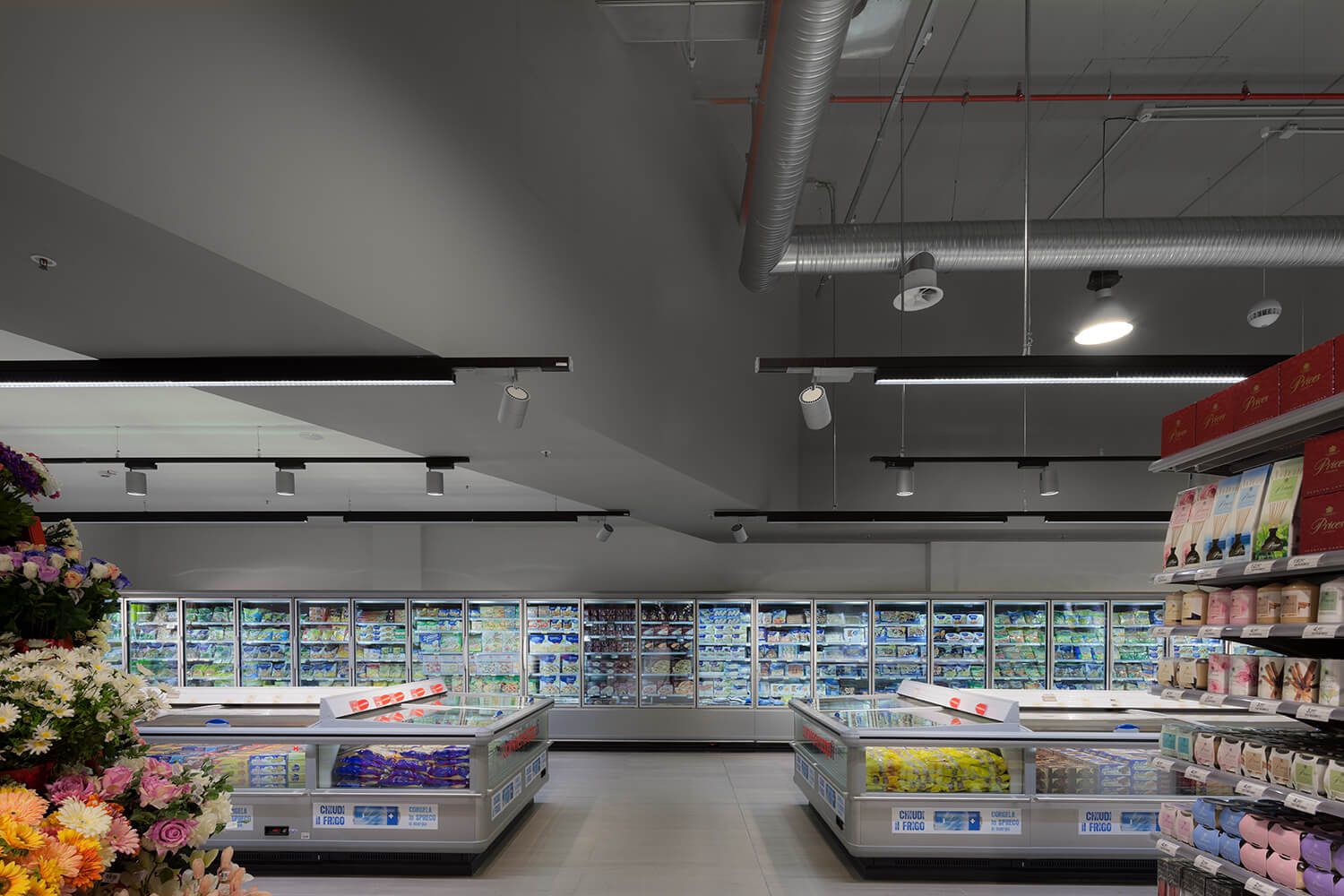
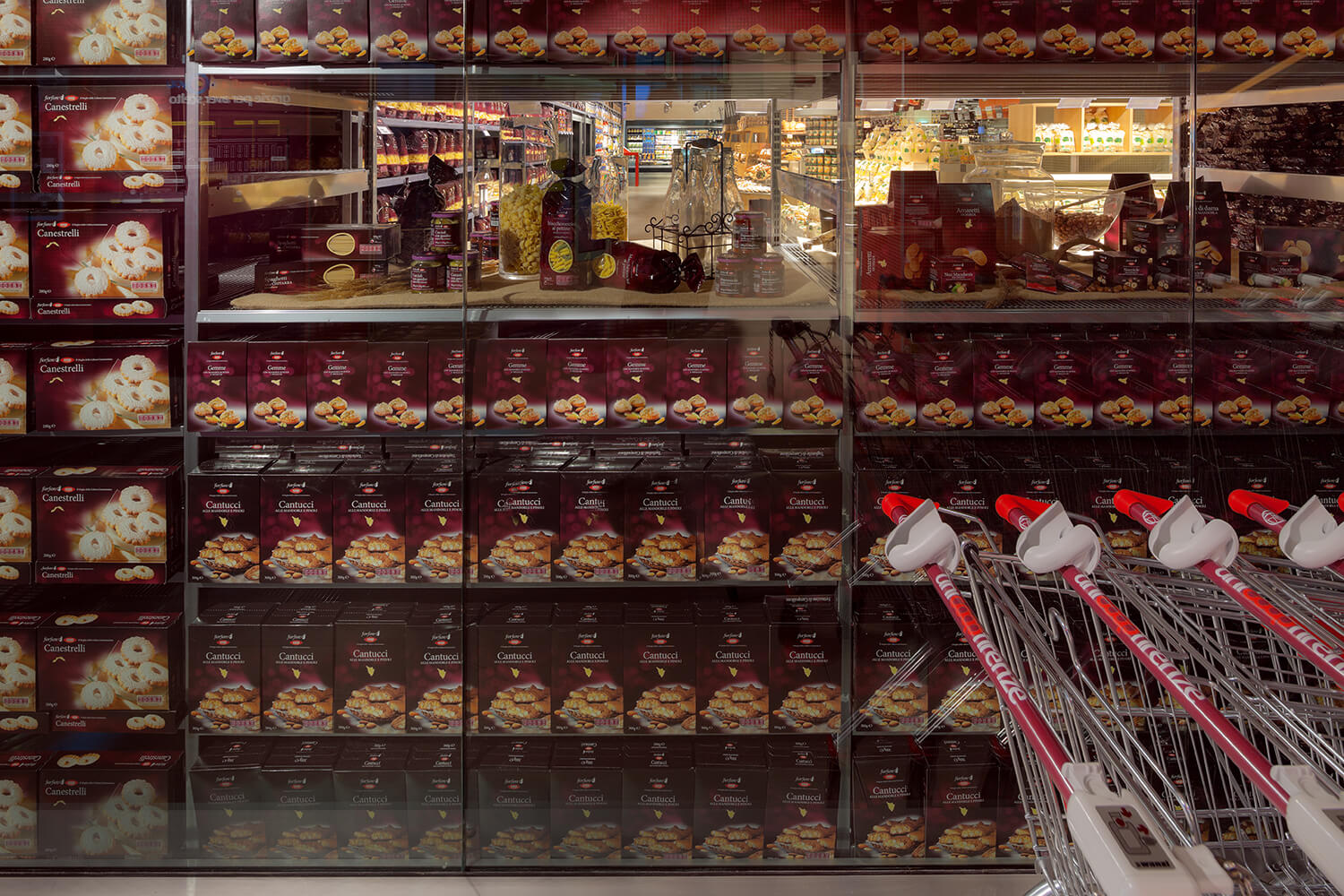
A space aimed at expressing contemporaneity and innovation in one of the most vital types of living in cities: the market as a commercial and social place dedicated to people.



New layouts composed by islands are dedicated to the freshness of Coop brand products, household articles, and assortments of high-quality products and Tuscan specialties. The lightweight and transparent display structures are distinguished by a design that is familiar and traditional at the same time, even when illuminated by LED technology and continuously suspended between innovation and tradition.
Extensive digital support, a new brand, and new display solutions are placed at the service of the clients, while avoiding exhibitions of technology as useless solutions and instead providing proposals that support customers in obtaining the necessary information for making high-quality choices for foods and other products.
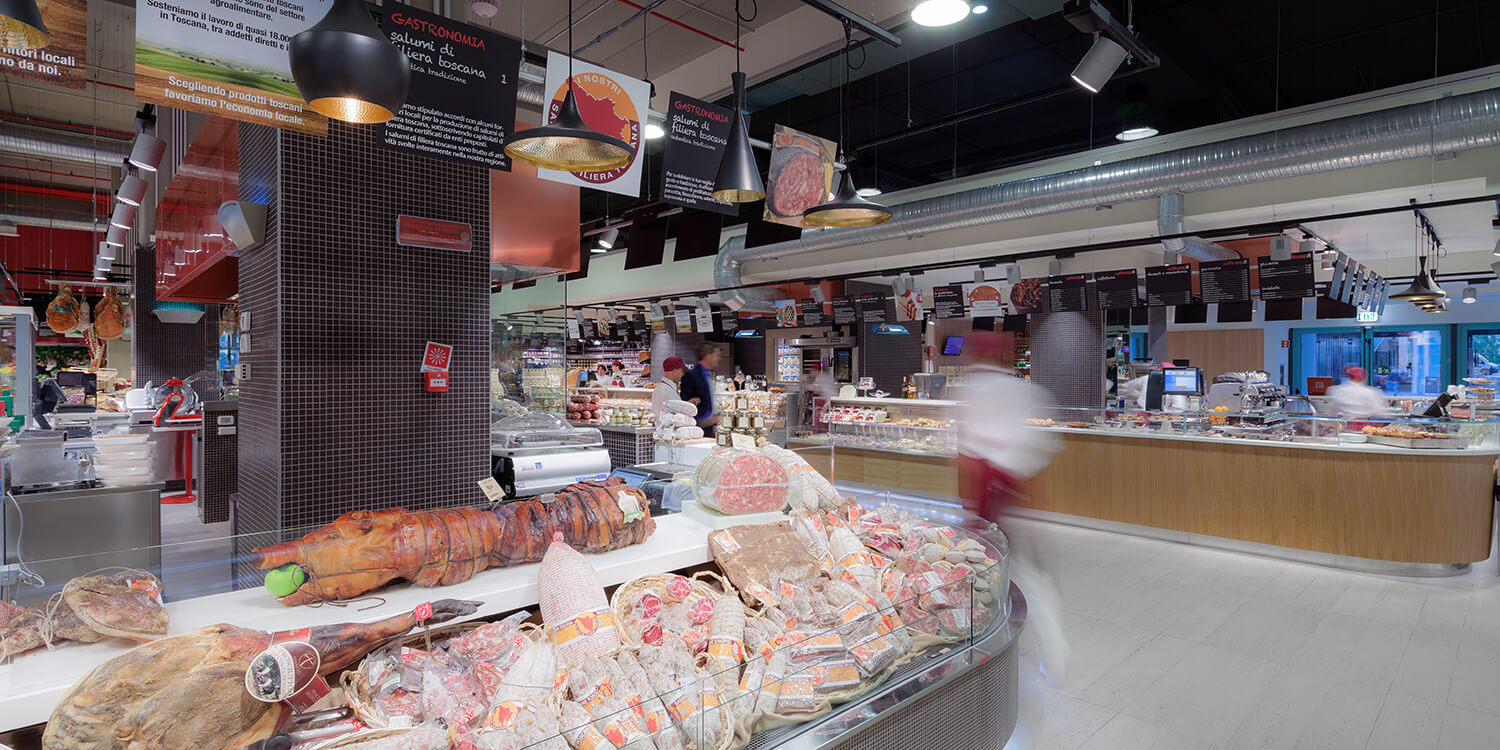
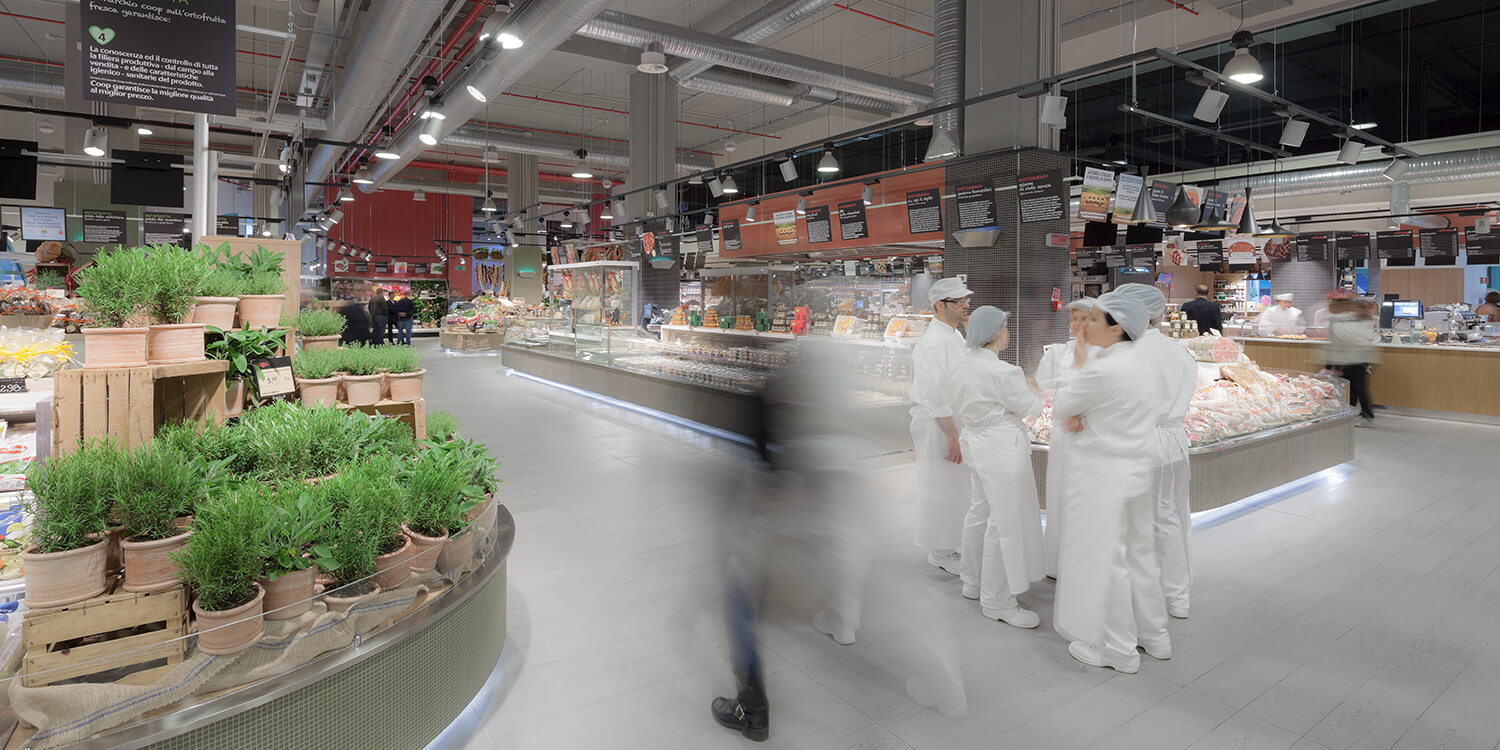
the project aims to reconnect and update the tradition of the market around the quality of the relationships between the places, people, and things if which the markets – like it or not – continue to be unsurpassed examples . Places inspired by and made for people.
